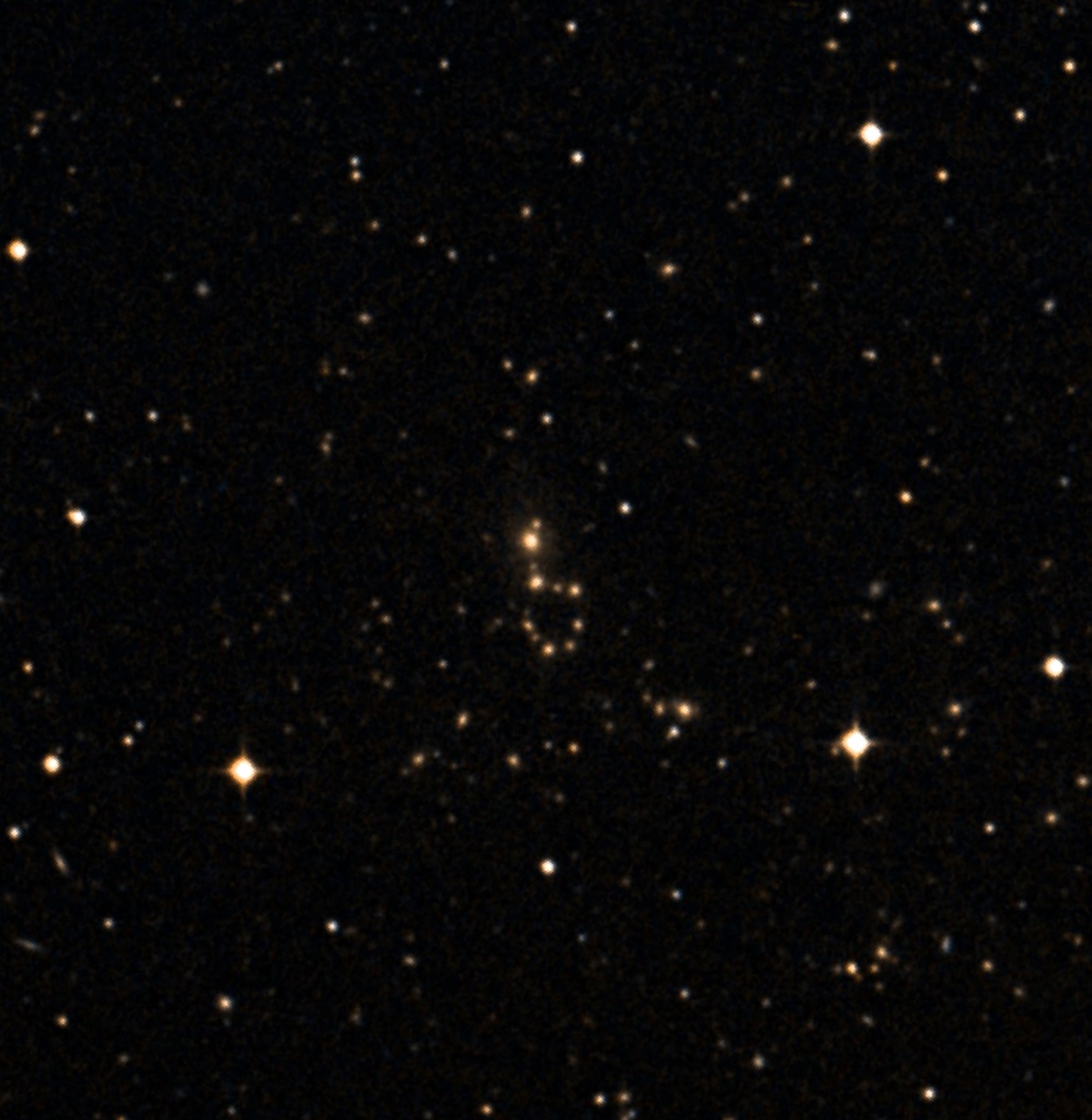
This distant ring of galaxies is the 388th entry in volume 8 of the Catalogue of Galaxies and of Clusters of Galaxies compiled by Swiss astronomer Fritz Zwicky. As such, it’s referred to as VIII ZW 388. But astronomers (especially amateurs) often refer to it as Zwicky’s Necklace.
The brightest member of this group (the galaxy in the “handle” of the necklace) is LEDA 3110345. It glows at magnitude 14.9. The next brightest galaxy, just below LEDA 3110345 in this image, is LEDA 1142006, which glows slightly fainter at magnitude 15.9. The faintest member of the Necklace visible in this image, LEDA 4540064, scrapes the bottom of the scale at magnitude 19.1. That’s nearly 175,000 times fainter than the average human eye can see at night. Perhaps an amateur telescope with a 40-inch mirror could reveal the faintest one. If you have such an instrument, you’ll find Zwicky’s Necklace a bit more than 31/2° southeast of magnitude 4.3 Tau (τ) Virginis.
This object was discovered more than four decades ago, but little is known about it. It contains at least 10 galaxies arranged in a ring (or necklace). The oldest image of it was taken in 1955 by the first Palomar Observatory Sky Survey. The NASA/IPAC Extragalactic Database, normally a font of valuable information, contains almost nothing about it.
Zwicky’s description, published in a 1975 paper he wrote with Wallace L. W. Sargent and Charles T. Kowal, reads: “Four red spherical (stellar or fluffy) compacts surrounded by seven additional compacts within circle of 7 minutes of arc. Individual magnitudes from 16.8 to 19.3.”
Based on the redshift of the group, Zwicky’s Necklace probably lies some 2 billion light-years away.









